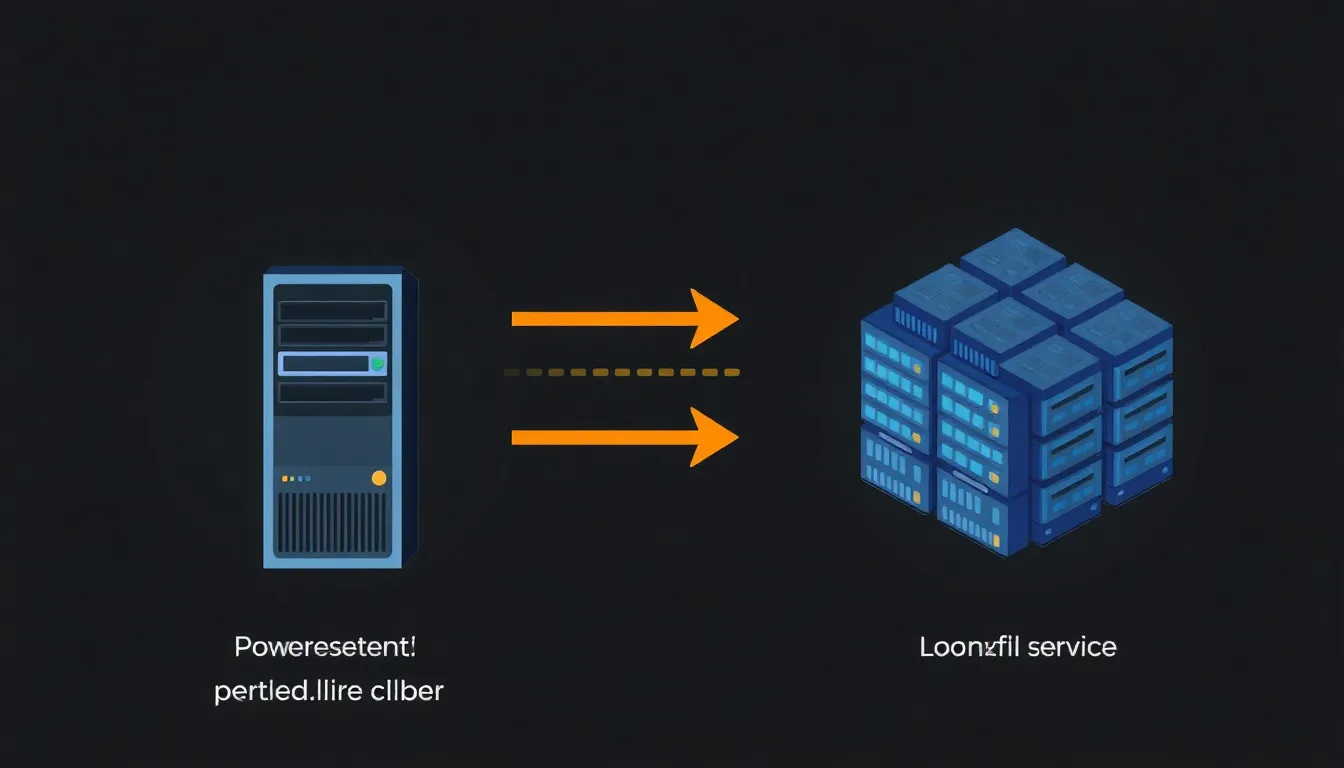In today’s fast-paced digital landscape, software scalability has become a critical factor for businesses aiming to thrive. As companies grow and user demands increase, the ability to scale software efficiently can make or break their success. It’s not just about handling more users; it’s about maintaining performance, reliability, and user satisfaction as systems expand.
Understanding software scalability is essential for developers and decision-makers alike. It involves designing systems that can adapt to increased loads without compromising functionality or speed. By implementing scalable solutions, organizations can ensure they’re prepared for future growth, making it a vital consideration in any software development strategy.
Table of Contents
ToggleUnderstanding Software Scalability
Software scalability refers to a system’s capacity to handle increased loads without compromising performance. It’s crucial for applications to evolve alongside user demands and business growth.
Definition of Software Scalability
Software scalability defines a system’s ability to expand its capabilities to manage growing workloads. It encompasses two primary types: vertical scaling (adding resources to a single node, like upgrading CPU or RAM) and horizontal scaling (adding more nodes, such as servers, to distribute load). A scalable system can accommodate fluctuations in demand seamlessly while retaining functionality.
Importance in Modern Applications
Scalability plays a significant role in modern applications as user bases and data volumes expand rapidly. Systems that scale effectively can support increasing traffic, improve application responsiveness, and enhance reliability during peak times. Efficient scalability fosters better user experiences, leading to higher satisfaction and retention rates. Furthermore, businesses that prioritize scalability can reduce operational costs by optimizing resource allocation and minimizing downtime during upgrades or maintenance.
Types of Software Scalability

Software scalability primarily consists of two types: vertical scalability and horizontal scalability. Each type plays a significant role in how systems accommodate increased loads and grow alongside user demands.
Vertical Scalability
Vertical scalability, also known as scaling up, involves adding resources—such as CPU, RAM, or storage—to a single server or node. This approach enhances the server’s capacity to process additional requests without modifying the overall architecture of the system.
- Increased resource allocation: Adding more powerful hardware components can improve performance.
- Simplicity of implementation: Developers can upgrade existing infrastructure without reconfiguring the system.
- Cost considerations: While vertical scaling may initially seem less expensive, it can lead to higher costs for premium hardware and potential downtime during upgrades.
Horizontal Scalability
Horizontal scalability, or scaling out, entails adding multiple servers or nodes to distribute the overall load. This method allows organizations to handle increased traffic effectively.
- Improved load distribution: Multiple servers share the workload, enhancing system reliability and response times.
- Scalability on demand: Organizations can add or remove servers as necessary based on fluctuating traffic patterns.
- Cost efficiency: Generally, horizontal scaling utilizes commodity hardware, which can be more cost-effective than consistently upgrading high-powered servers.
Understanding the differences between vertical and horizontal scalability helps businesses choose the right approach for their specific needs, ensuring their applications can efficiently manage growth and demand.
Key Factors Influencing Scalability
Several factors significantly influence software scalability, impacting how applications perform under varying loads. Understanding these aspects enables developers to create robust systems capable of accommodating growth effectively.
Architecture Design
Effective architecture design is crucial for scalability. Well-structured systems facilitate efficient data flow and resource utilization. Key elements include:
- Microservices Architecture: This promotes modular design, enabling independent scaling of services without affecting the entire application.
- Decoupling Components: Isolating components allows for targeted scaling and easier maintenance, enhancing overall system performance.
- Load Balancing: Distributing incoming traffic across multiple servers prevents overwhelming a single resource, ensuring consistent performance.
Resource Management
Resource management directly affects scalability. Proper allocation and optimization of resources enhance application responsiveness under load. Important considerations include:
- Dynamic Resource Allocation: Automatically adjusting resources based on demand ensures efficiency and prevents resource shortages.
- Caching Strategies: Implementing caching reduces database load by storing frequently accessed data, improving access times.
- Monitoring and Analytics: Real-time analytics identify bottlenecks and performance issues, allowing for proactive resource adjustments.
By focusing on architecture design and resource management, organizations can create scalable systems that smoothly adapt to increased demands.
Challenges in Achieving Scalability
Organizations encounter various challenges while aiming for effective software scalability. Identifying and addressing these challenges is crucial for ensuring systems can manage growth efficiently.
Performance Bottlenecks
Performance bottlenecks can occur at different points within a software architecture. These bottlenecks may arise from limited server resources, inefficient database queries, or overly complex code. Each of these factors can decrease application performance, impacting user experience. Identifying bottlenecks requires monitoring tools and performance testing. Common solutions include optimizing code, employing caching strategies, and implementing load balancing techniques. Properly addressing these issues enhances responsiveness, ensuring the software can handle increased user loads without degradation.
Cost Implications
Cost implications can significantly affect decisions about scalability. Scaling solutions may involve substantial upfront investments in hardware or cloud resources. Vertical scaling often requires purchasing expensive components or premium servers, leading to increasing operational and maintenance costs. Horizontal scaling, while generally more cost-effective, demands ongoing expenses related to additional servers and the necessary infrastructure. Balancing these costs with expected benefits, such as improved performance and user satisfaction, is essential for organizations. Effective budgeting and forecasting help businesses weigh immediate expenses against long-term scalability goals, ensuring sustainable growth without overspending.
Best Practices for Enhancing Scalability
Enhancing software scalability involves implementing effective strategies that optimize performance and resource management. Key practices include code optimization techniques and load balancing strategies.
Code Optimization Techniques
Code optimization significantly improves application performance and scalability. Techniques such as reducing algorithm complexity and eliminating redundancy enhance efficiency.
- Refactoring Code: Refactoring simplifies complex code structures, improving maintainability and efficiency.
- Minimizing Database Calls: Reducing database queries by consolidating multiple calls into a single request decreases load and improves response times.
- Utilizing Asynchronous Processing: Implementing asynchronous operations allows tasks to run in the background, freeing up resources and reducing latency.
- Caching Data: Caching frequently accessed data minimizes retrieval times and reduces the load on databases, significantly enhancing performance under heavy traffic.
Load Balancing Strategies
Load balancing distributes incoming traffic effectively across multiple servers, ensuring applications maintain optimal performance during peak loads.
- Round Robin: Rotating requests among servers ensures even distribution, useful in stateless applications.
- Least Connections: Directing traffic to servers with the fewest active connections optimizes resource use, beneficial for long-lived connections.
- IP Hashing: Assigning requests based on client IPs helps in maintaining session persistence, crucial for stateful applications.
- Dynamic Load Balancing: Continuously analyzing server performance and adjusting traffic distribution enhances responsiveness, accommodating varying loads efficiently.
Implementing these best practices ensures applications are well-equipped to handle growth and maintain performance, providing a solid foundation for future scalability.
Prioritizing software scalability is essential for businesses aiming to thrive in a rapidly evolving digital landscape. By understanding the nuances of vertical and horizontal scaling organizations can make informed decisions that support growth and enhance user satisfaction.
Implementing best practices such as code optimization and effective load balancing not only improves performance but also prepares systems for future demands. Addressing performance bottlenecks and managing costs effectively ensures that scalability aligns with long-term business objectives.
Ultimately a well-designed scalable architecture empowers organizations to adapt seamlessly to changing user needs while maintaining operational efficiency.



